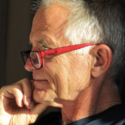After Theo Colborn, Dianne Dumanoski and I published Our Stolen Future in 1996, we got “slapped” by one of the most prominent science journalists of the day, Gina Kolata writing for the New York Times. Among her criticisms was that one chemical can’t cause a plethora of diseases. It was one chemical, one disease, like asbestos and mesothelioma.
Talk about progress. That ‘paradigm’ is so broken now it’s hard to imagine how any science editor who has been following advances in the environmental health sciences, including endocrine disruption, would allow an argument like that to pass the editorial laugh test. Yes, there are examples other than asbestos that do follow that pattern, but especially in endocrine disruption, they are the exception, not the rule.
As Thomas Kuhn wrote in The Structure of Scientific Revolutions (1962), current scientific paradigms have enormous inertia. This is still true. And that’s even without the active dissembling focused on resisting change funded purposefully and heavily by vested interests, a fact of life in work on the environmental health consequences of chemical exposures.
Despite strong and wily opposition, the environmental health science community using science and communication over the past 2 decades has shattered multiple paradigms that for decades if not centuries medicine had held dear, preventing its practitioners from embracing the opportunities to prevent diseases by reducing exposures, instead of merely treating them (usually with pharmaceutical chemicals).
Rethinking Broken Paradigms
Some of my favorite broken paradigms? “The dose makes the poison.” We now know that high dose exposures do not predict low dose impacts. “Nature vs. Nurture” becomes “Nature and Nurture.” “Those statistically significant adverse effects are not toxicologically relevant because they aren’t the same in both sexes.” Actually, for endocrine disrupting compounds, the default expectation now is that there will be differences between how the sexes respond to exposure. And then there’s the still ubiquitous practice among regulatory agencies of testing chemicals one at a time, instead of in the mixtures in which they always occur.
The CHE community has played a pivotal role over the last two decades in breaking down these outdated paradigms.
How? It has created, purposefully and steadfastly, multiple real and virtual safe spaces where new ideas and results can be examined, discussed and debated, not just by people throwing bricks at the old paradigms, but by thoughtful scientists willing to listen to new ideas, new data, new hypotheses that challenge some of their most cherished notions. More, these spaces by design have welcomed advocates with serious commitments to carry the discussions into the real world, to share this ongoing thunder of scientific understandings with the media, policy advocates, and even, provocateurs. Those safe spaces have been immeasurably valuable for progress. They might not be the flashiest new shiny objects on the block, but they have helped us get beyond old, outdated and sometimes even harmful ideas.
CHE has done all that as waves of new scientific results have been published and as the media landscape has changed enormously. The CHE community has embraced the new results and adapted to sweeping revolutions in communication challenges and opportunities.
And that’s what the next two decades of environmental health science and communication needs more of, turbocharged.
Related resources:
Endocrine Disruption and Environmental Health: Ten Years After Our Stolen Future, CHE call transcript and recording, March 2006
Our Stolen Future - Revisited 15 Years Later, ChemSec Youtube video, September 2011
This article initially appeared in the San Francisco Marin Medical Society Journal, in a special section honoring CHE's 20th year.


